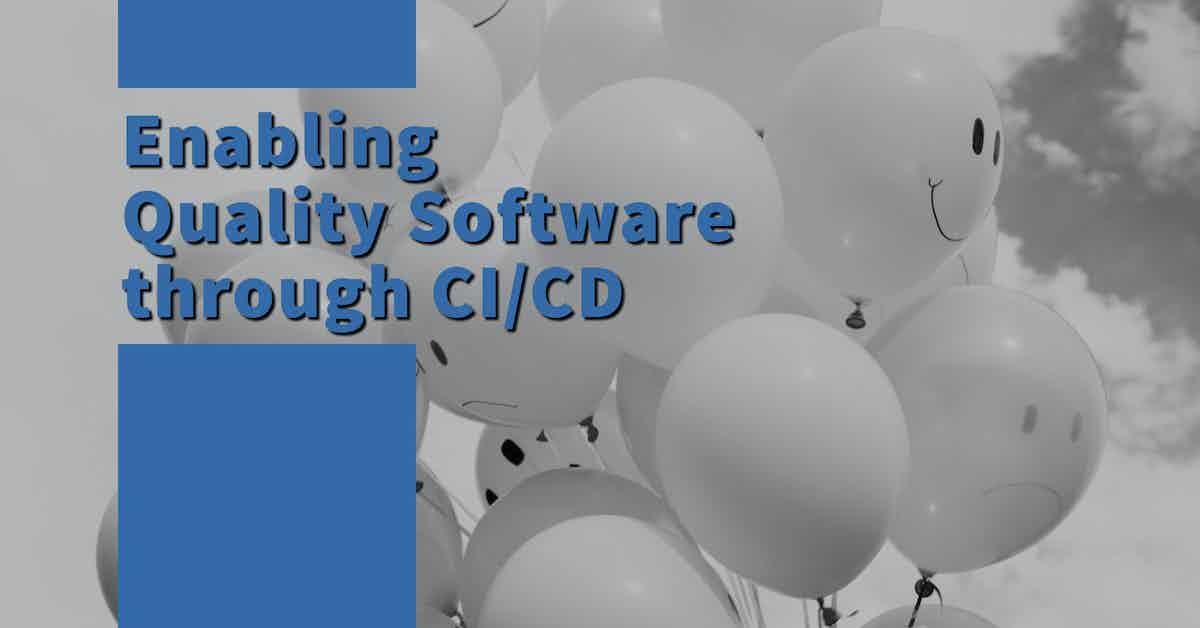In the dynamic landscape of software development, where agility, speed, and quality are paramount, Continuous Integration and Continuous Deployment (CI/CD) have emerged as game-changing practices. These methodologies have revolutionized the way software is developed, tested, and delivered, enabling teams to produce high-quality software at a remarkable pace. In this blog, we delve into the world of CI/CD and how it plays a pivotal role in ensuring the delivery of top-notch software.
- What is CI/CD?
- The CI/CD Pipeline: Quality at Every Step
- The Pathway to Quality: CI/CD's Impact
- Conclusion
- References
What is CI/CD?
Continuous Integration (CI) is a development practice where code changes are regularly integrated into a shared repository. This integration is followed by automated tests that verify whether the new code functions correctly within the existing codebase. The primary goal of CI is to detect and address integration issues early in the development process, therefore minimizing the chances of defects piling up.
Continuous Deployment (CD), on the other hand, takes the process a step further. Once code changes have undergone the CI process and passed all tests successfully, they are automatically deployed to a production-like environment. This practice ensures that software updates are made available to users at a rapid pace, improving user experience and allowing for quicker response to market demands.
The CI/CD Pipeline: Quality at Every Step
At the heart of CI/CD lies the pipeline – a sequence of automated steps that transform raw code into a fully tested, deployable product. Let’s explore how CI/CD pipelines enable the creation of high-quality software:

Automated Testing
CI/CD pipelines incorporate a variety of automated tests, including unit tests, integration tests, and end-to-end tests. These tests verify the functionality and performance of the code changes, ensuring that bugs are caught early in the development cycle. By identifying issues promptly, developers can rectify them before they snowball into larger, more complex problems. [1]
Code Reviews
As part of the CI process, developers submit their code changes to a shared repository. This opens the door for peer reviews, where other team members can assess the code for quality, adherence to coding standards, and potential issues. Code reviews foster collaboration and knowledge sharing within the team, leading to better code overall. [2]
Consistency and Standardization
CI/CD encourages the use of automated build and deployment scripts, promoting consistency in the development process. Standardized scripts ensure that every build is reproducible, reducing the chances of errors caused by manual configurations. [3]
Early Detection of Defects
By continuously integrating and testing code changes, CI/CD pipelines swiftly identify defects, allowing developers to address them before they impact the final product. This approach reduces the “bug debt” that accumulates when issues are left unresolved for extended periods.
Faster Time-to-Market
Evidence illustrates that CD accelerates the release cycle by automating the deployment process. As a result, this enables software updates to reach end-users faster, providing them with new features and fixes in a timely manner.
Feedback Loop
CI/CD fosters a strong feedback loop between developers, testers, and users. Rapid deployment and continuous user feedback enable developers to make informed decisions about prioritizing features and addressing issues.
The Pathway to Quality: CI/CD’s Impact
The adoption of CI/CD methodologies yields a range of benefits that contribute to the creation of high-quality software:
Reduced Risks and Costs
Early bug detection and rapid feedback mechanisms minimize the chances of major defects surfacing in the production environment. Therefore, this leads to fewer costly and time-consuming post-release fixes.
Enhanced Collaboration
CI/CD promotes collaboration among development, testing, and operations teams. This cross-functional collaboration leads to improved communication, shared understanding, and a unified focus on quality.
Improved Code Stability
With frequent integrations and tests, code stability is maintained, thus enabling developers to confidently make changes without fearing destabilization of the entire system.
Increased Developer Productivity
CI/CD automates repetitive tasks, allowing developers to focus on innovation and creativity. As a result, this improved productivity translates into more time for refining code quality.
Higher User Satisfaction
Rapid deployment of updates means that users can benefit from new features and fixes sooner, enhancing their overall experience and satisfaction.
Conclusion
In the ever-evolving world of software development, CI/CD has become an indispensable tool for ensuring the delivery of high-quality software. By integrating code changes, automating tests, and streamlining deployment processes, CI/CD pipelines empower development teams to catch defects early, reduce risks, and maintain a relentless focus on quality. Similarly, as software development advances, embracing CI/CD methodologies will be essential for organizations aiming to provide exceptional products that meet the demands of a rapidly changing market.




